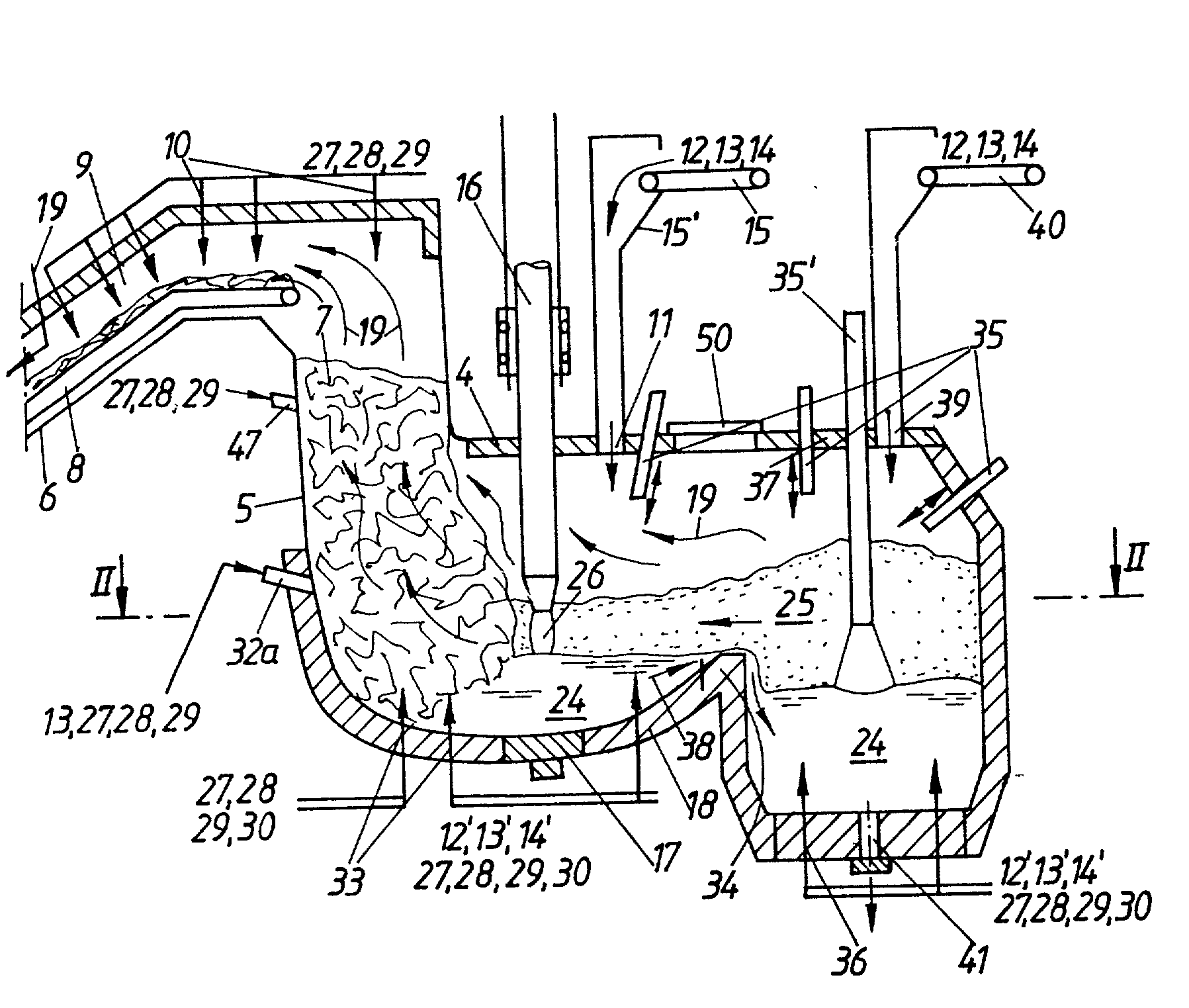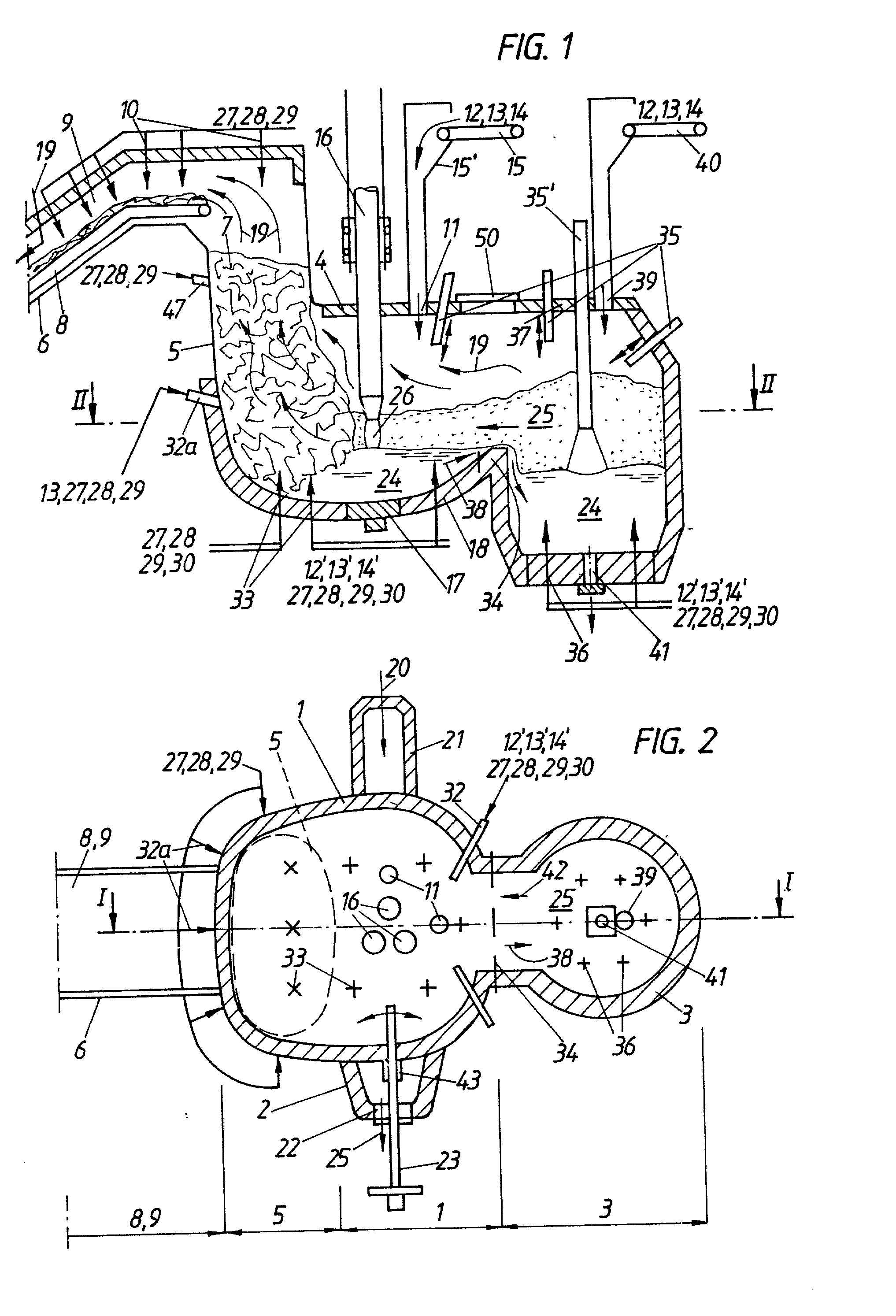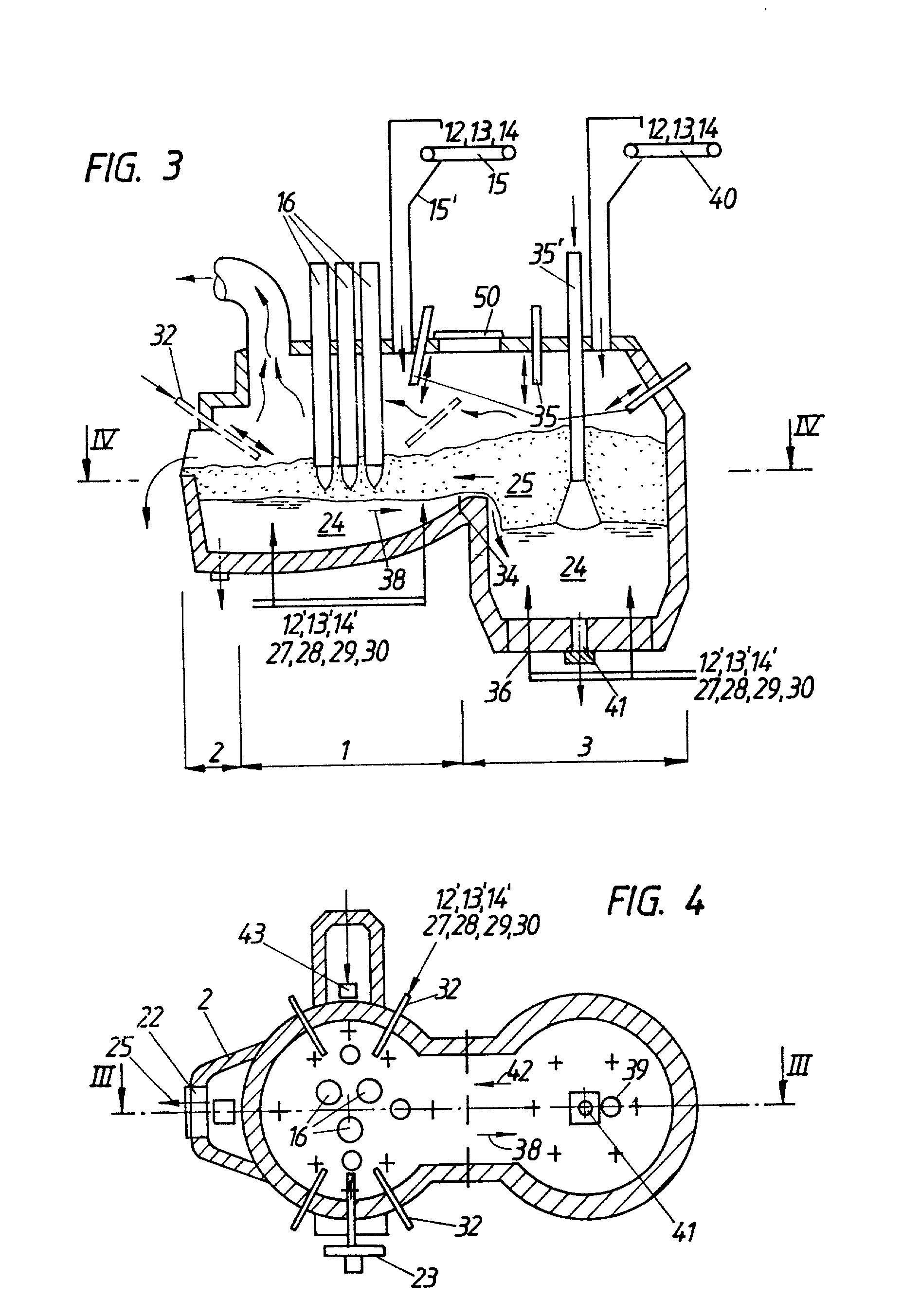Process for the production of metal melts
a technology of metal melt and process, which is applied in the direction of manufacturing converters, furnaces, lighting and heating apparatuses, etc., can solve the problems of inability to achieve conventional electric arc furnaces, and inability to achieve quasi-stationary continuous process
- Summary
- Abstract
- Description
- Claims
- Application Information
AI Technical Summary
Benefits of technology
Problems solved by technology
Method used
Image
Examples
exemplary embodiments 1 and 2
[0245] Plant according to FIG. 1 comprising
[0246] a heating part 9 (conveyor belt 8 with preheating function)
[0247] a scrap preheating shaft 5 of oval cross-section
[0248] a furnace vessel 1 configured as an AC-EAF as a melting and prefining vessel
[0249] a converter vessel 3 of the type LD-S* *coverter with inert-gas bottom flushing N.sub.2 / Ar
[0250] a decanting part 2 associated with the furnace vessel 1
Exemplary Embodiment 3
[0251] Plant according to FIG. 3, comprising
[0252] an AC electric arc furnace as the furnace vessel 1, as the melting and prefining vessel
[0253] a converter vessel 3 of the type LD-S* *coverter with inert-gas bottom flushing N.sub.2 / Ar
[0254] a decanting part 2
4TABLE II Chemical composition and temperature of the Fe-containing charging substances steel scrap 0.30% C 2.5% ashes 0.50% Mn 0.2% moisture 0.20% Si 0.030% S 25.degree. C. 0.020% P sponge iron pellets 91.9% FE.sub.tot (MIDREX-DRI) 92.9% degree of metallization 1.8% C 4.6% gangue about 0.5 gangue basicity 2...
exemplary embodiment 1
[0303] The charge mix consists of 100% steel scrap (mixed scrap) having the composition shown in Table II. The process is carried out using the plant variant according to FIG. 1 with the scrap preheating shaft 5 having an internal effective cross-section of 11.5 m.sup.2 and with two scrap conveying belts 8 (each with a belt width of 2.0 m and a belt length of 40 m), which are arranged in parallel side by side and prior to unloading the scrap 7 into the preheating shaft 5 pass through a common heating part 9 which is 10 m in length, with the heating part 9 opening directly into the upper hood region of the preheating shaft 5.
[0304] A small partial amount (1.50%) of the scrap with a piece size .ltoreq.100 mm is fed into the converter vessel 3 continuously as a cooling agent 12 at a temperature of 25.degree. C. The rest of the scrap, which has a max. length of the scrap pieces of 1.5 m (i.e. the principal partial amount 7 of 88.50%), is charged onto the two scrap conveying belts 8 by m...
exemplary embodiment 2
[0356] The charge mix consists of
[0357] 40% steel scrap
[0358] 30% sponge iron (pellets) and
[0359] 30% liquid pig iron
[0360] having the properties presented in Table II.
[0361] In the instant case, there is principally no essential difference compared with the Exemplary embodiment 1 presented above as far as the plant configuration and the fundamental process course to be employed are concerned. Differences with respect to plant configuration and process control result from the different quantitative ratios and properties of the components in the charge mix. The process is likewise carried out using the plant variant according to FIG. 1, yet
[0362] employing the scrap preheating shaft 5 having the small effective cross-section of about 5 m.sup.2, wherein the difference with respect to the scrap preheating shaft 5 having the large effective cross-section of about 11.5 m.sup.2 is made up for by providing an additional lid piece in the lid 4 of the furnace vessel 1, which piece matches th...
PUM
| Property | Measurement | Unit |
|---|---|---|
| angle | aaaaa | aaaaa |
| temperature | aaaaa | aaaaa |
| angle of inclination | aaaaa | aaaaa |
Abstract
Description
Claims
Application Information
 Login to View More
Login to View More - R&D
- Intellectual Property
- Life Sciences
- Materials
- Tech Scout
- Unparalleled Data Quality
- Higher Quality Content
- 60% Fewer Hallucinations
Browse by: Latest US Patents, China's latest patents, Technical Efficacy Thesaurus, Application Domain, Technology Topic, Popular Technical Reports.
© 2025 PatSnap. All rights reserved.Legal|Privacy policy|Modern Slavery Act Transparency Statement|Sitemap|About US| Contact US: help@patsnap.com



